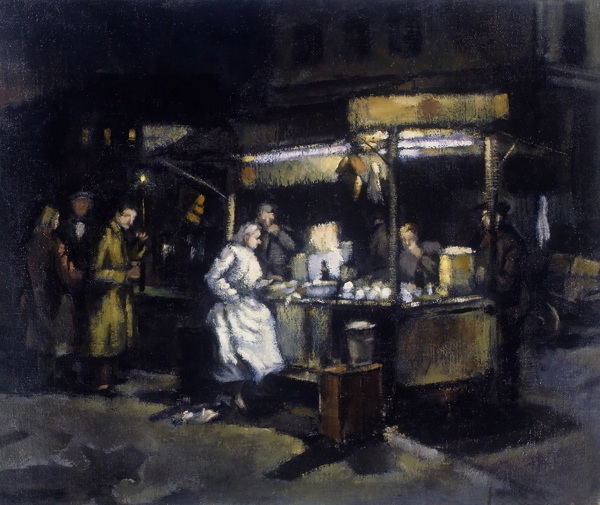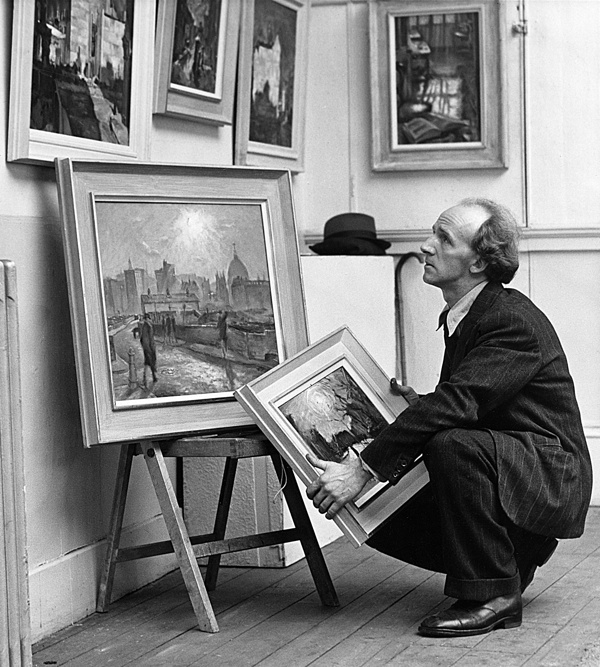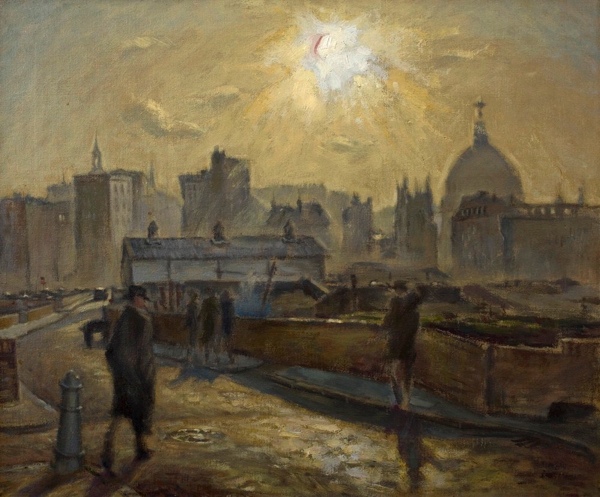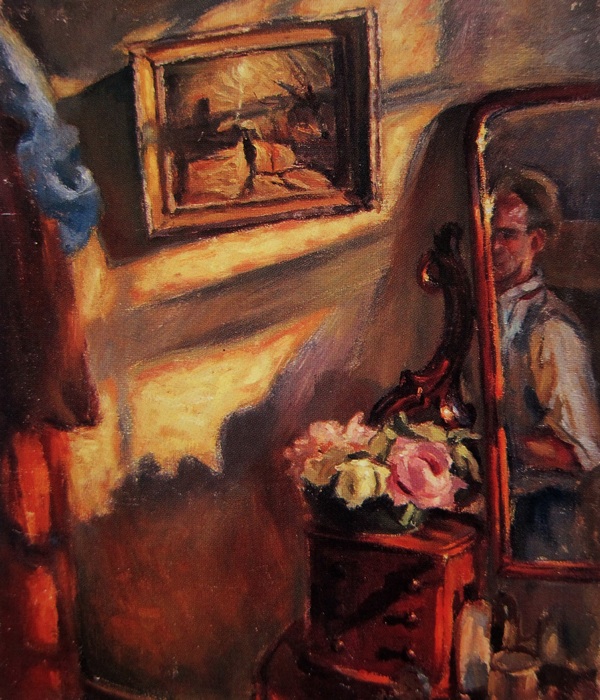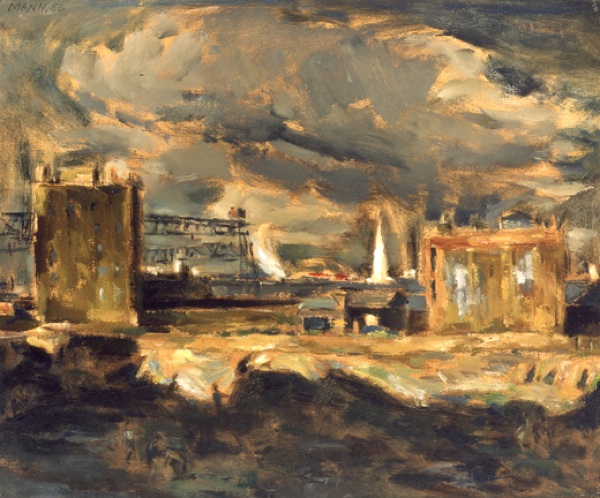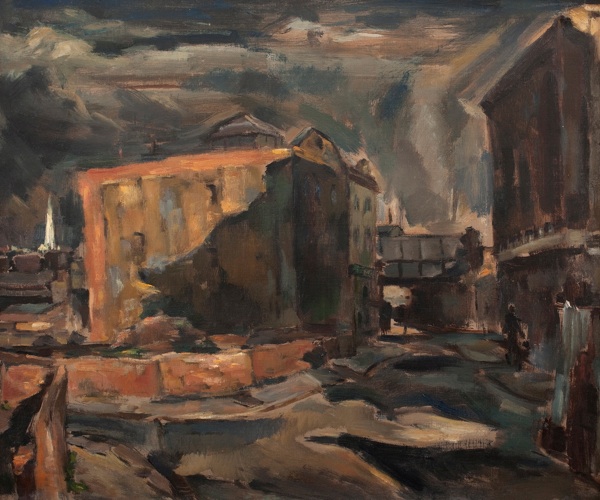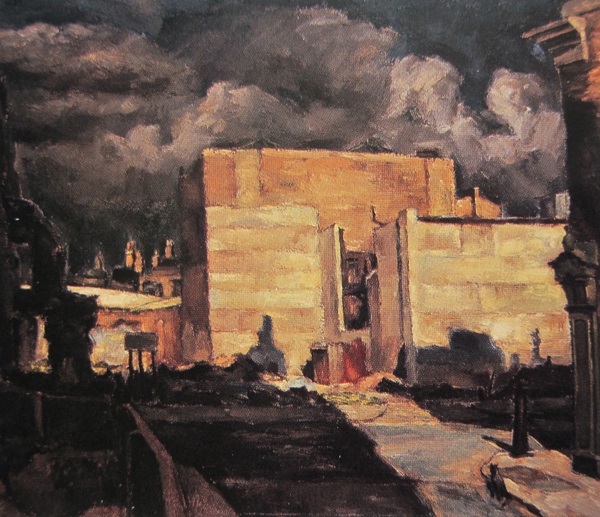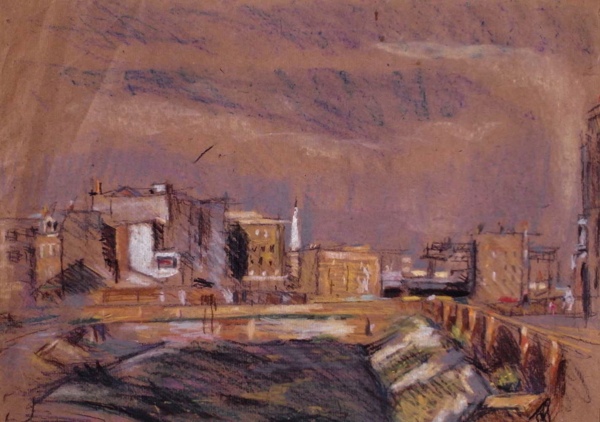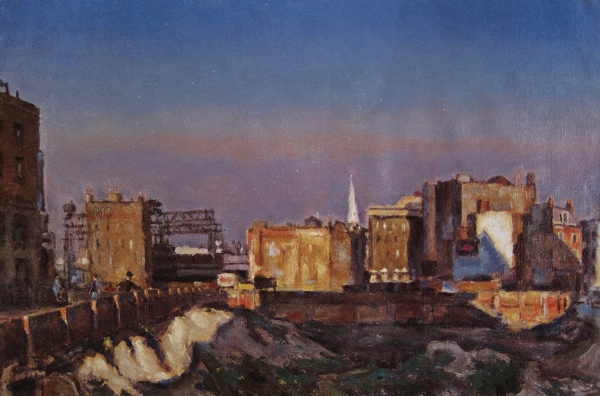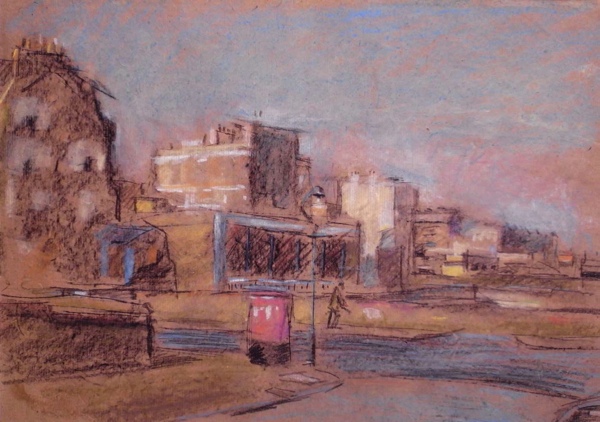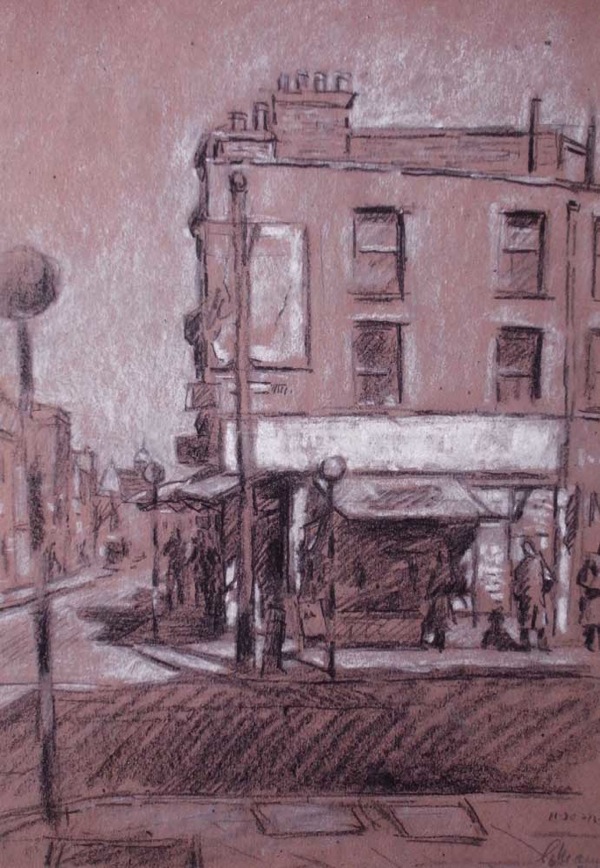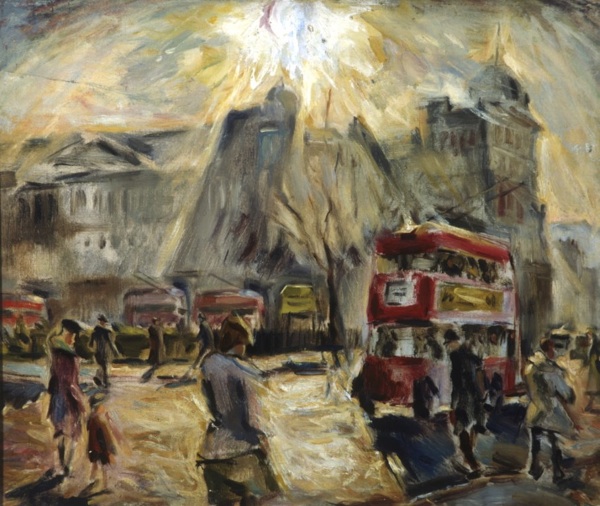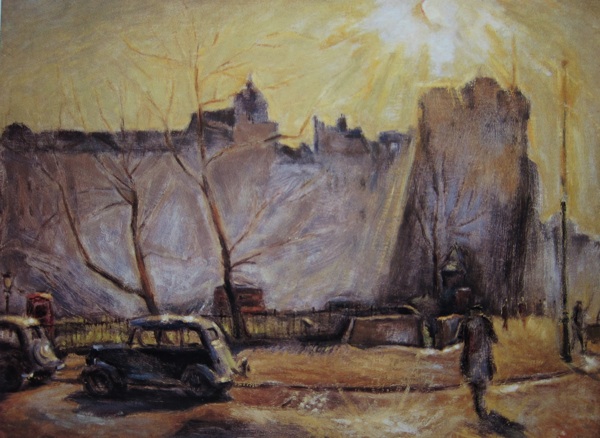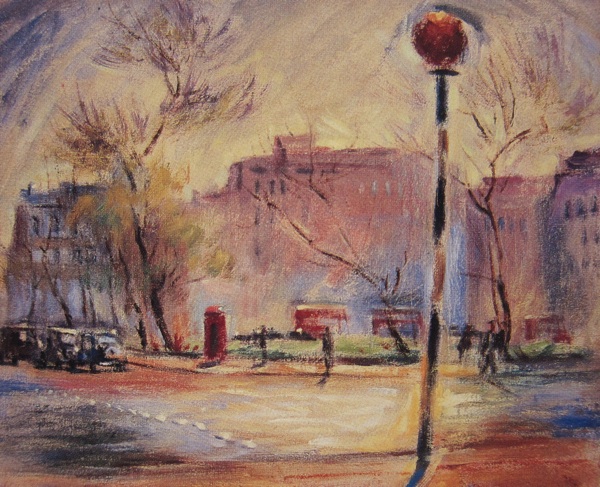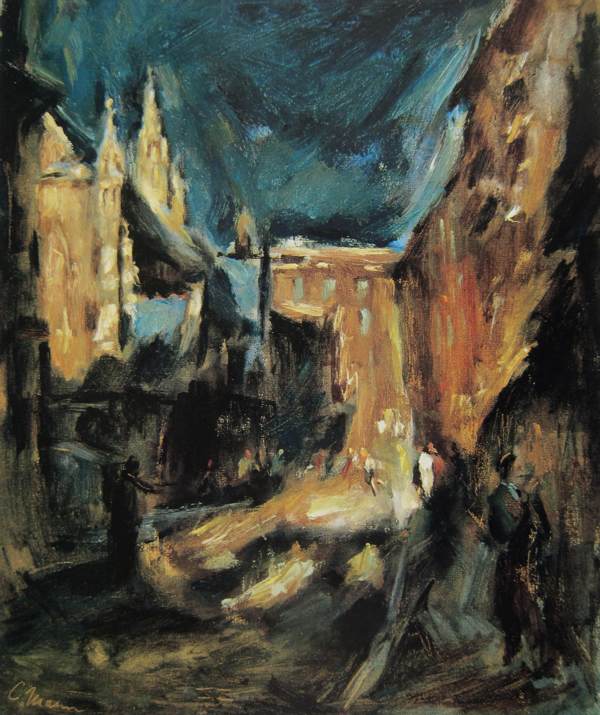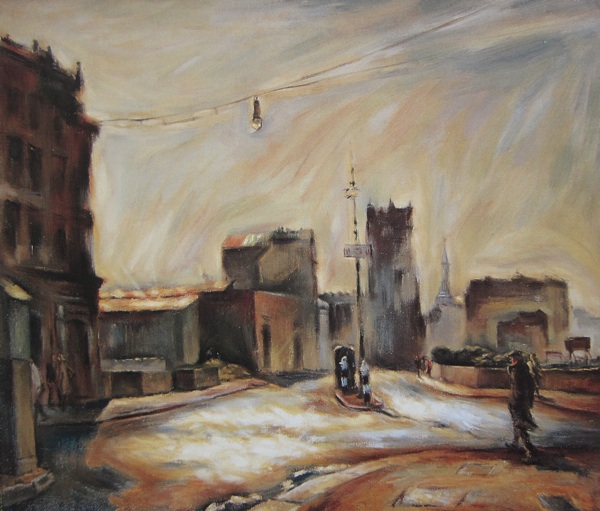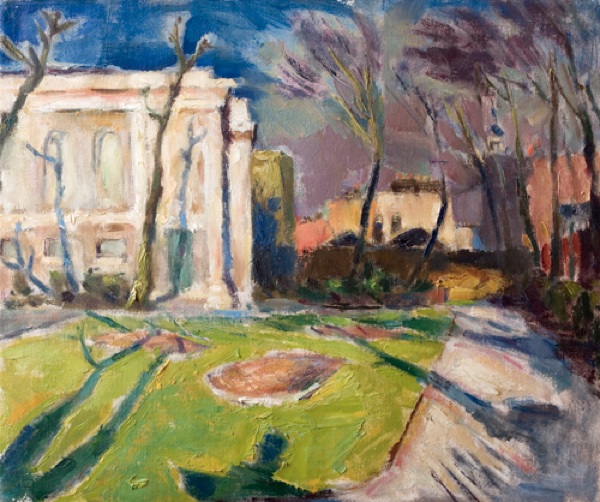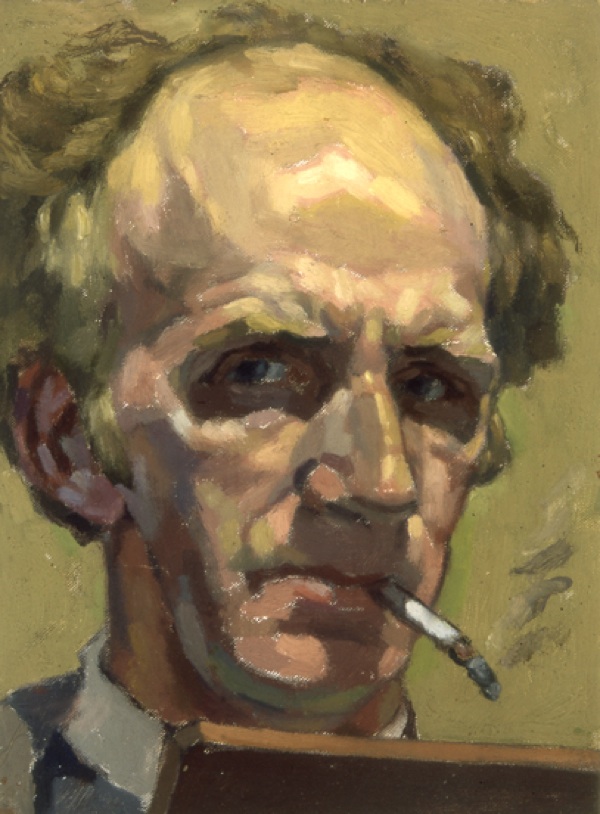Tubby Isaac’s Jellied Eel Stall, Petticoat Lane, c. 1950
After serving as a Gunner in the Royal Artillery in World War II, Cyril Mann returned to live in a tiny flat in Paul St with his wife Mary and small daughter Sylvia in 1946. Close to where the Barbican stands today, this area at the boundary of the City of London had suffered drastic bomb damage and much of it remained a wasteland for decades. Roving around these desolate streets as far east as Spitalfields, Cyril Mann discovered the subject matter for a body of works which became the focus of a major exhibition at the Wildenstein Gallery in 1948.
Losing his hair in his thirties, Cyril Mann had the look of a man older than his years. Through the Depression he had been unemployed and close to starvation, yet thanks to a trust fund set up by Erica Marx he entered the Royal Academy Schools at twenty years old in 1931. For one so young, he had already seen a great deal of life. At twelve, he had been the youngest boy ever to win a scholarship to Nottingham College of Art, before leaving at fifteen to be a missionary in Canada. Quickly abandoning this ambition, he became a logger, a miner and a printer, until returning to London to renew his pursuit of a career as an artist. Ever restless, he moved to Paris after three years at the Royal Academy and there he met his first wife Mary Jervis Read.
Forced to leave his wife and baby when he was called up in 194o, Cyril Mann did not paint at all for the duration of the war. Back in London and battling ill-health, he set out to make up for lost time. The fragmented urban landscape of bombsites that was familiar to Londoners was new to him and, turning his gaze directly into the sun, he sought to paint it transfigured by light. Channelling his turbulent emotion into these works, Cyril Mann strove to discover an equilibrium in the disparate broken elements he saw before him, and many of these paintings are almost monochromatic, as if the light is dissolving the forms into a mirage.
During these years, Cyril Mann’s life underwent dramatic change. He obtained a teaching job at the Central School of Art in 1947 and exhibited at the prestigious Wildenstein Galery, showing his new works in 1948. Yet at the same time, his marriage broke down and he found himself alone, painting in the tiny flat in Paul St. Whilst critically acclaimed, his exhibition was a commercial failure because, in post-war London, nobody wanted to see images of bombsites and consequently these important works became forgotten.
Yet, through his struggle, Cyril Mann’s work as an artist had acquired a new momentum and, after 1950, a bold use of colour returned to his painting. In 1956, he was offered a flat in the newly-built modernist Bevin Court built by Tecton in Islington, where he was to live until his death in 1980.
At a time when all other artists turned away from painting the London streets, Cyril Mann made it his subject. While these pictures may not have suited the taste of the post-war capital, they comprise a unique body of work that witnesses the spirit and topography of these threadbare years. As his second wife, Renske who met Cyril Mann in 1959, assured me, “I believe he is the most significant London painter of the nineteen-forties, post-war.”
Cyril Mann preparing for his exhibition at Wildenstein Gallery in 1948
St Paul’s from Moor Lane, 1948
Cyril in his crowded flat in Paul St, c. 1950
Christ Church Spitalfields seen across bombsites from Scrutton St
Christ Church Spitalfields seen over bombsites from Redchurch St
Bomb site in Paul St with cat, c. 1950
Christ Church Spitalfields seen from Shoreditch
Bomb sites around Paul St, c. 1950
Christ Church Spitalfields from Worship St, c. 1948
Streetscape with red pillar box
East End shop
Trolley bus in Finsbury Sq, c. 1949
Finsbury Sq, c. 1949
Finsbury Sq, c. 1949
Red lamp post, Old St
Bombsite at Old St
Cock & Magpie, Wilson St, Shoreditch
St Michael, Shoreditch, c. 1948
St Michael and St Leonard’s Shoreditch from Leonard St, c. 1950
Angel Islington from City Rd, 1950
St James Church, Pentonville Rd, Islington, 1950
Cyril Mann (1911-1980)
Images copyright © Estate of Cyril Mann
Paintings by Cyril Mann can be seen at Piano Nobile Gallery
